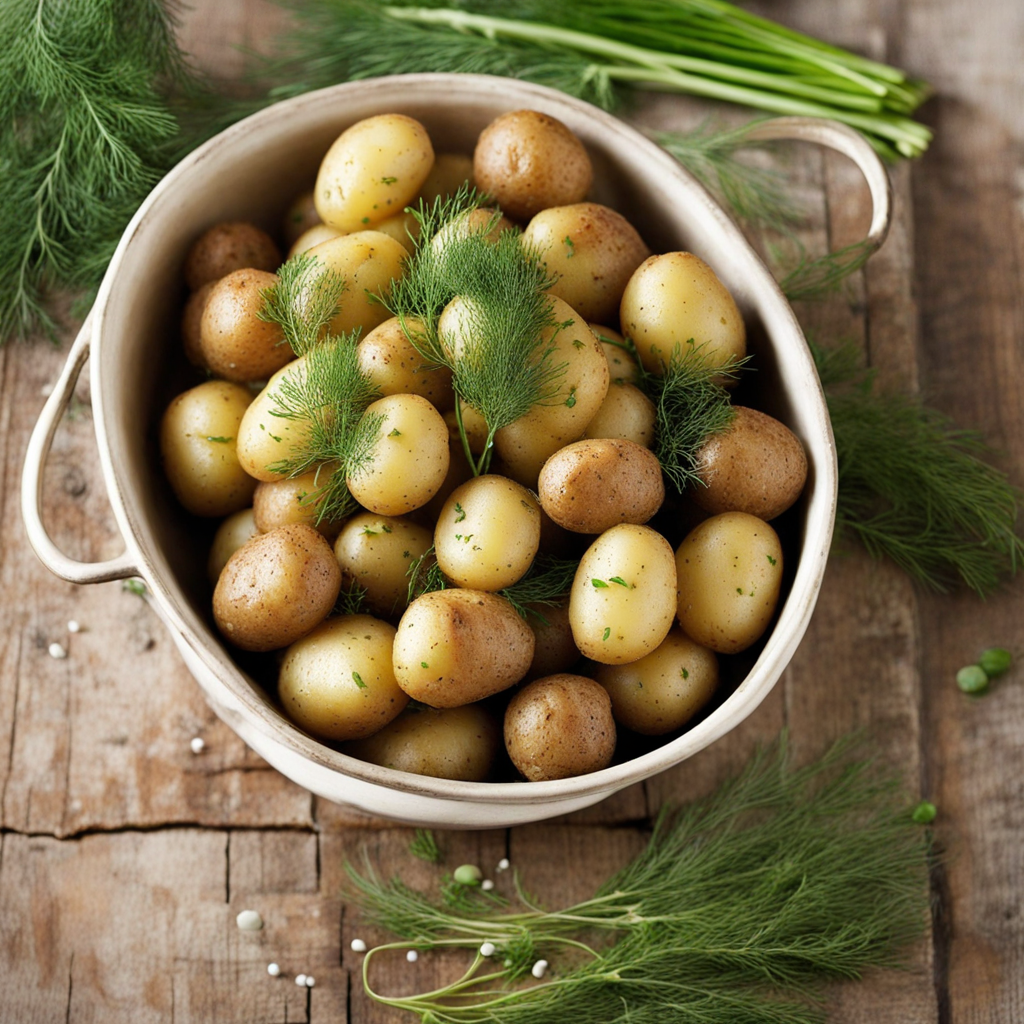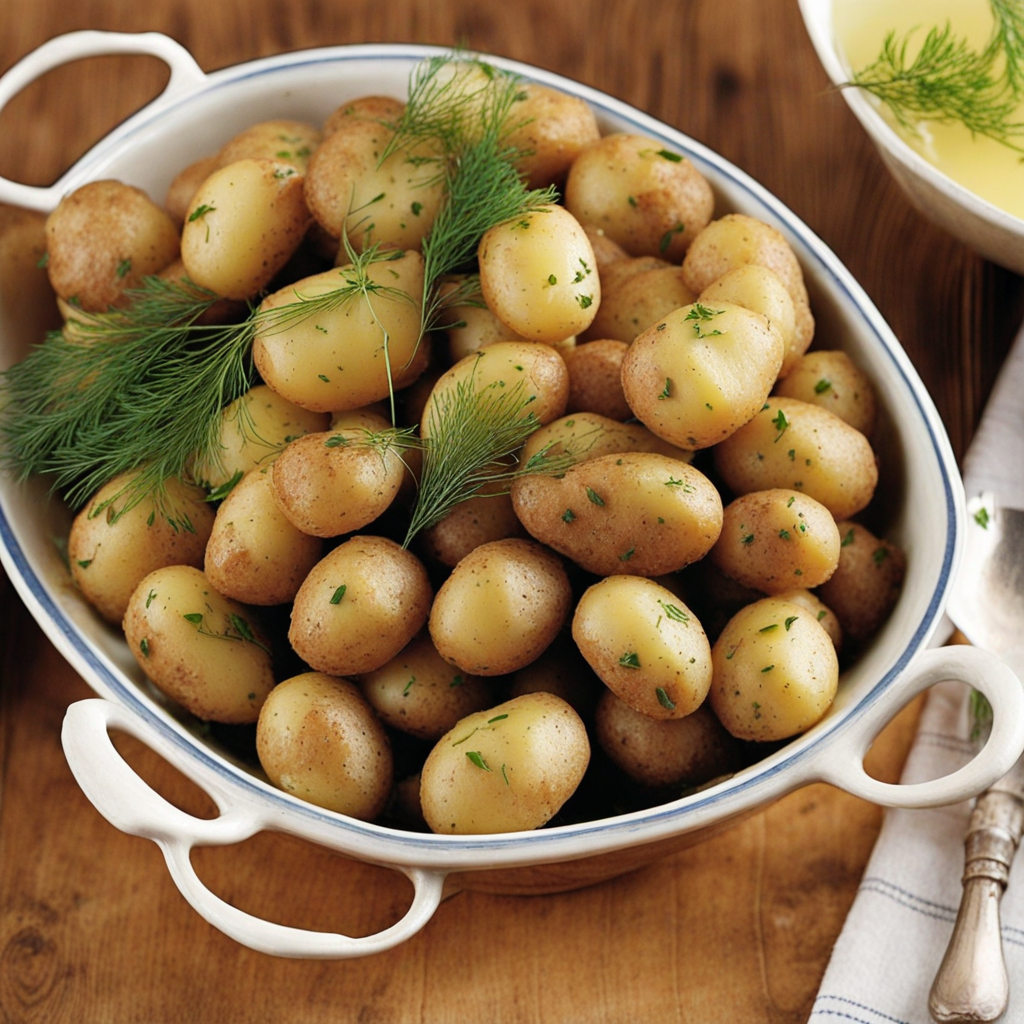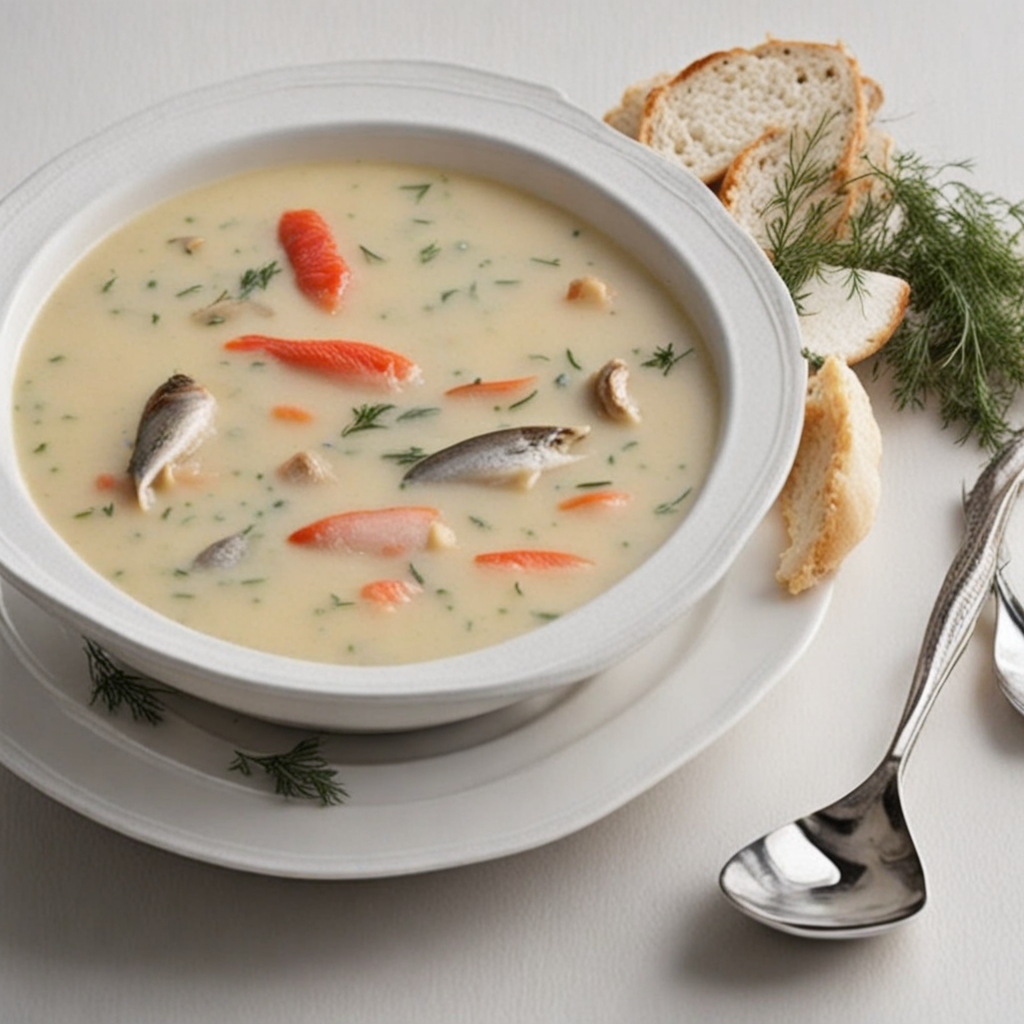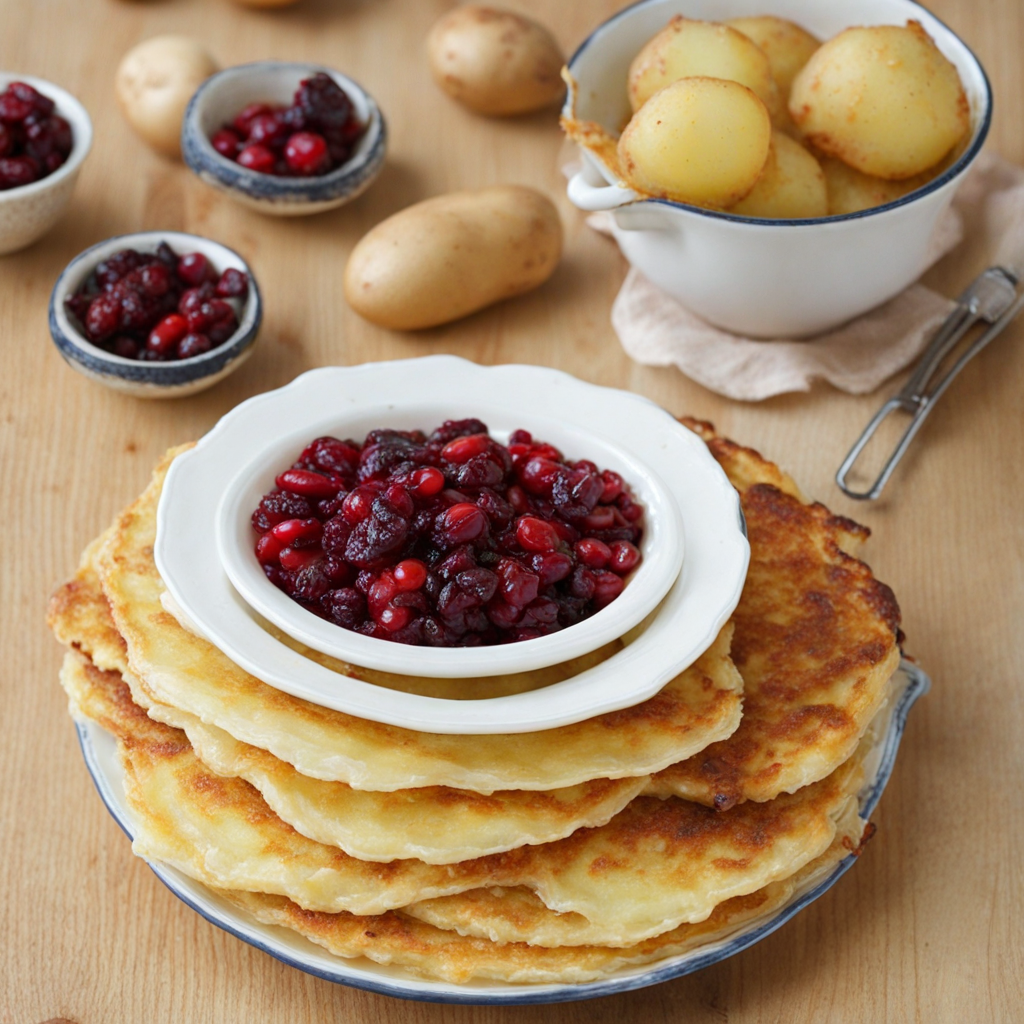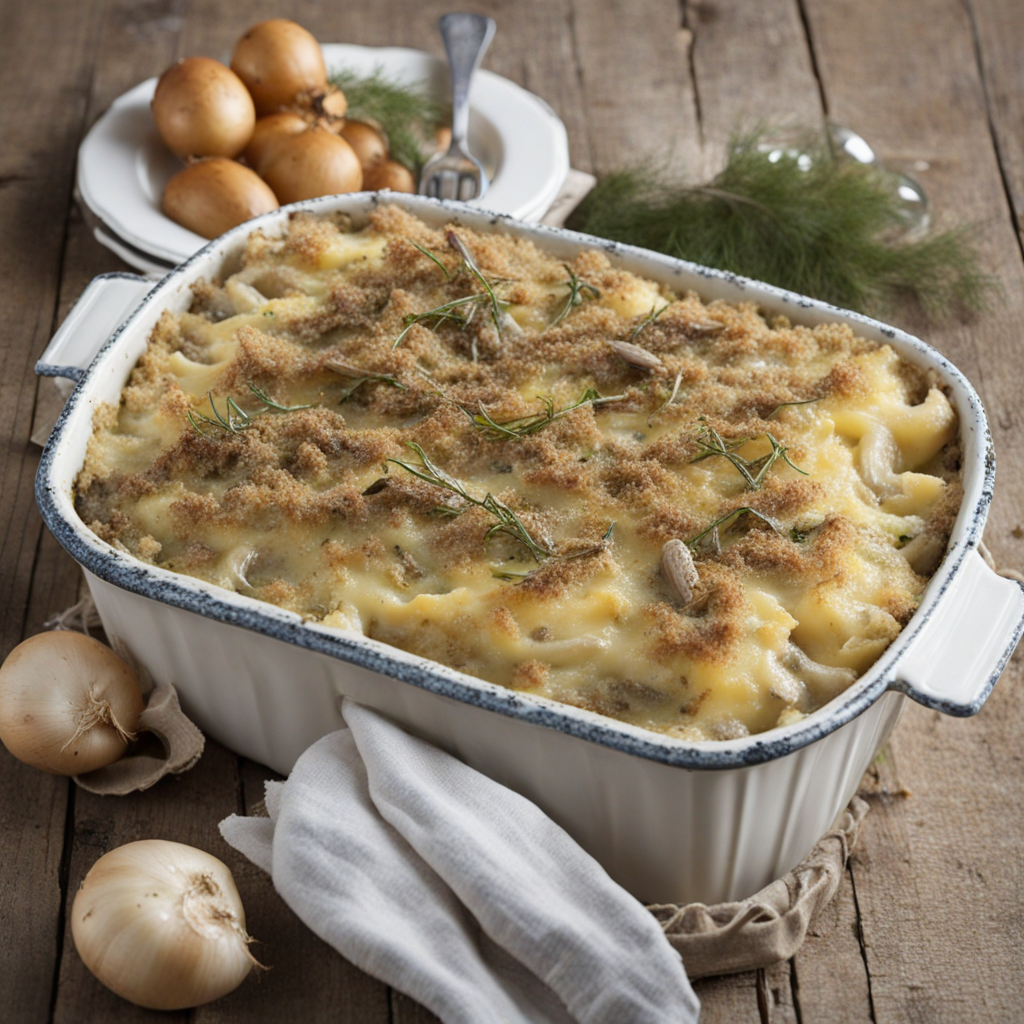Swedish Dill Potatoes
Swedish Dill Potatoes, known as "Dillpotatis" in Sweden, are a delightful side dish that showcases the country's love for fresh ingredients and simple, yet flavorful preparations. This dish typically features small, waxy potatoes, which are boiled until tender, allowing their natural sweetness to shine through. The secret to their charm lies in the addition of fresh dill, a herb that thrives in the Nordic climate and brings a vibrant, aromatic quality to the potatoes. The combination of the buttery, earthy flavor of the potatoes and the bright, slightly anise-like notes of dill creates a harmonious balance that is both comforting and refreshing. To prepare Swedish Dill Potatoes, the potatoes are often cooked with their skins on to retain their nutrients and flavor. Once tender, they are tossed in a generous amount of melted butter and sprinkled with freshly chopped dill. This simple yet effective method enhances the potatoes' inherent flavors while imbuing them with a fragrant, herbaceous essence that transports you to the lush Swedish countryside. The dish is typically seasoned with a touch of salt and pepper, elevating the overall taste experience without overwhelming the palate. These potatoes are a versatile accompaniment to a variety of Swedish dishes, from herring and cured meats to grilled fish and roasted meats. They are especially popular during festive occasions and summer gatherings, where they serve as a refreshing side that complements the bold flavors of traditional Swedish cuisine. With their bright green flecks of dill and creamy buttery sheen, Swedish Dill Potatoes not only offer a delightful taste but also bring a burst of color to any plate, inviting diners to savor the essence of Sweden in every bite.
How It Became This Dish
Dillpotatis: An Engaging History of Sweden's Beloved Dill Potatoes Swedish cuisine is a tapestry of flavors and traditions, woven together through centuries of cultural exchange and agricultural evolution. Among its many culinary delights, Dillpotatis—literally "dill potatoes"—stands out as a quintessential dish that embodies the essence of Swedish cooking. This simple yet flavorful preparation of new potatoes and fresh dill encapsulates the Swedish approach to food: celebrating local ingredients, seasonal dining, and a deep-rooted connection to nature. Origins of Dillpotatis The origins of Dillpotatis can be traced back to the agricultural practices of rural Sweden. Potatoes were introduced to Sweden in the late 17th century, following their arrival in Europe from the Americas. Initially met with skepticism, potatoes gradually became a staple food, particularly in the colder regions where other crops struggled to thrive. As the Swedish population adapted to this versatile tuber, they began to experiment with various methods of preparation, and it was in this context that Dillpotatis emerged. Dill, a herb native to the Mediterranean region and widely used in Scandinavian cooking, found its way into Swedish kitchens alongside the potato. The herb’s distinctive flavor and aromatic qualities complemented the earthiness of the potato, leading to the creation of Dillpotatis. The dish became particularly popular during the summer months when new potatoes were in season, and fresh dill was readily available. Cultural Significance Dillpotatis is more than just a dish; it is a symbol of Swedish culture and heritage. It is often associated with the Midsummer celebrations, a time when Swedes gather to welcome the summer solstice. During these festivities, Dillpotatis is served as a side dish alongside herring and other traditional fare, embodying the spirit of communal dining and the joy of seasonal ingredients. The dish also reflects Sweden’s agricultural identity. Traditionally, Swedish households would grow their own potatoes and dill in their gardens, fostering a deep connection to the land. This homegrown aspect of Dillpotatis celebrates the Swedish ethos of “lagom,” which translates to “just the right amount.” The dish is simple and unpretentious, focusing on the quality of the ingredients rather than elaborate preparation. Development Over Time As Sweden entered the 19th century, Dillpotatis began to evolve alongside the country’s culinary landscape. The Industrial Revolution brought about significant changes in food production and consumption patterns. With the rise of urban centers, traditional rural dishes began to adapt to the needs of a growing urban populace. Dillpotatis maintained its presence on Swedish tables, but its preparation varied according to regional and familial preferences. In the early 20th century, the dish gained further prominence as a staple of everyday Swedish cuisine. The introduction of new cooking technologies, such as gas and electric stoves, made it easier to prepare potatoes. As a result, Dillpotatis became a common feature in Swedish homes, especially during summer picnics and family gatherings. The post-World War II era marked a turning point for Swedish cuisine, as the country experienced economic growth and increased access to global ingredients. While Dillpotatis remained a beloved dish, its preparation began to incorporate modern influences. Chefs started experimenting with presentation and pairings, leading to creative variations that included additional ingredients like butter, cream, or different herbs. Nevertheless, the essence of Dillpotatis—its focus on fresh, local ingredients—remained intact. Modern-Day Dillpotatis In contemporary Sweden, Dillpotatis enjoys a renaissance as part of the "New Nordic Cuisine" movement, which emphasizes seasonal, locally sourced ingredients and a return to traditional cooking methods. Swedish chefs and home cooks alike celebrate Dillpotatis not just for its flavor but also for its cultural significance. It is often served at festive occasions, family meals, and even in upscale restaurants, where it is presented with a modern twist. The dish has transcended its humble origins, becoming emblematic of Swedish identity and culinary pride. Food festivals, cultural events, and cookbooks frequently highlight Dillpotatis, showcasing its versatility and enduring popularity. Whether enjoyed in a rustic setting or as part of a gourmet meal, Dillpotatis continues to evoke nostalgia and a sense of belonging among Swedes. Conclusion Dillpotatis is more than just a dish; it is a gastronomic narrative that encapsulates Sweden's agricultural roots, seasonal rhythms, and cultural values. From its humble beginnings as a peasant food to its place on the tables of modern-day Sweden, Dillpotatis serves as a reminder of the importance of simplicity, quality, and tradition in cooking. As Swedes continue to celebrate this beloved dish, they honor not only their culinary heritage but also their connection to the land and the community that nourishes them. In every bite of Dillpotatis lies a story—a story of resilience, adaptation, and the enduring joy of sharing a meal with loved ones. As Sweden embraces the future of its culinary landscape, Dillpotatis will undoubtedly remain a cherished symbol of the past, present, and future of Swedish food culture.
You may like
Discover local flavors from Sweden


